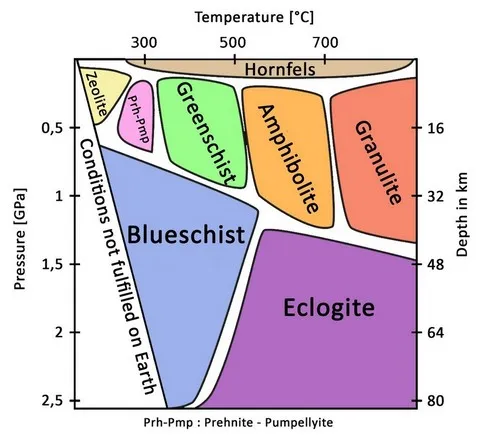What is a schist in geology ?
Schist : definition
The schists are very numerous. The most common varieties are represented by slate shales (with very fine grains), bituminous shales (with organic matter), sericite schists (with felting of small white micas), talcschists (with talc), chlorite schists (with chlorite and often tremolite-actinolite), calcschists (with calcite and sericite), etc... Glossy schists, powerful formations well represented in the Alps, are essentially composed of calcschists.
Schists are very common rocks of general low-gradient metamorphism (anchizone and epizone), and occupy large areas in recent and ancient mountain ranges. By raising the degree of metamorphism, the schists change to micaschists, then to gneisses.
Blueschists : Metamorphism
The "blueschists" constitute a metamorphic facies with lawsonite and glaucophane, the latter mineral giving them their dark blue hue. These rocks are formed under conditions of very high pressure (5 to 15 kbar), for a range of average temperatures (between 100 and 500°C). By increasing pressure and/or temperature, we pass into the field of eclogites.
From a petrographic point of view, these blue "schists" are in fact micaschists, or even gneisses.
Greenschists : Metamorphism
The "greenschists" constitute a metamorphic facies of fairly low intensity (between 300 and 500°C for pressures varying between 2 and 8 kbar), resulting in the appearance of muscovite, chlorite, albite-oligoclase and amphibole schist calcium (tremolite-actinolite). The usual presence of chlorite and actinolite gives these rocks a greenish tint, hence their name.
The amphibolite facies follows this greenschist facies, the transition being ensured by the biotite isograd.

